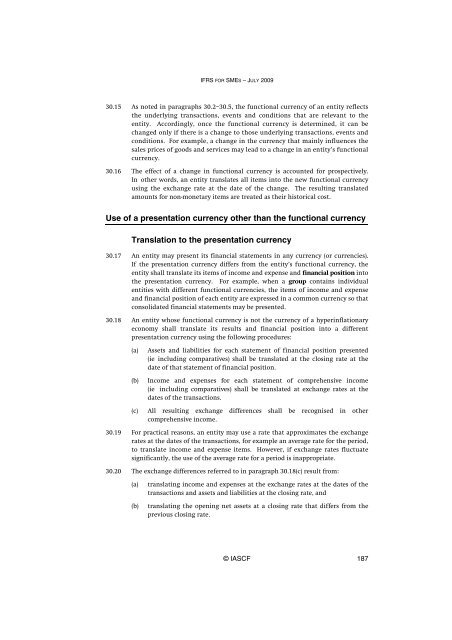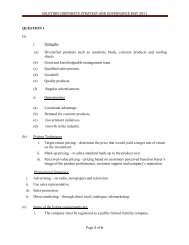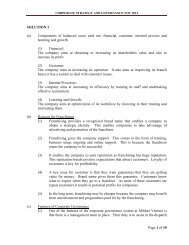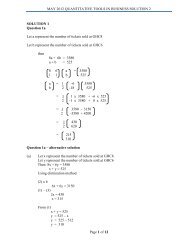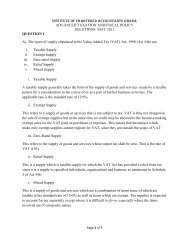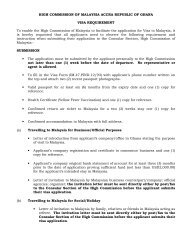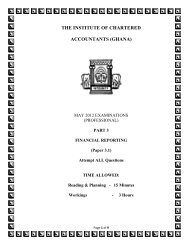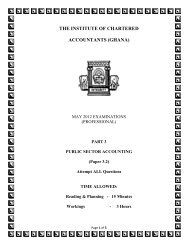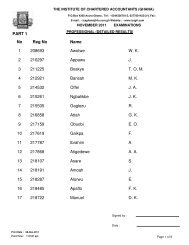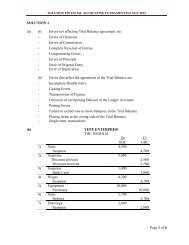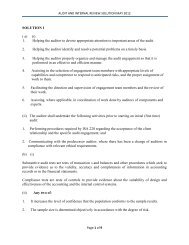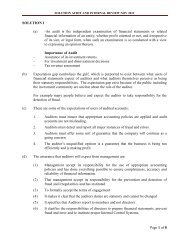(IFRS) for Small and Medium-sized Entities (SMEs)
(IFRS) for Small and Medium-sized Entities (SMEs)
(IFRS) for Small and Medium-sized Entities (SMEs)
Create successful ePaper yourself
Turn your PDF publications into a flip-book with our unique Google optimized e-Paper software.
<strong>IFRS</strong> FOR SMES – JULY 200930.15 As noted in paragraphs 30.2–30.5, the functional currency of an entity reflectsthe underlying transactions, events <strong>and</strong> conditions that are relevant to theentity. Accordingly, once the functional currency is determined, it can bechanged only if there is a change to those underlying transactions, events <strong>and</strong>conditions. For example, a change in the currency that mainly influences thesales prices of goods <strong>and</strong> services may lead to a change in an entity’s functionalcurrency.30.16 The effect of a change in functional currency is accounted <strong>for</strong> prospectively.In other words, an entity translates all items into the new functional currencyusing the exchange rate at the date of the change. The resulting translatedamounts <strong>for</strong> non-monetary items are treated as their historical cost.Use of a presentation currency other than the functional currencyTranslation to the presentation currency30.17 An entity may present its financial statements in any currency (or currencies).If the presentation currency differs from the entity’s functional currency, theentity shall translate its items of income <strong>and</strong> expense <strong>and</strong> financial position intothe presentation currency. For example, when a group contains individualentities with different functional currencies, the items of income <strong>and</strong> expense<strong>and</strong> financial position of each entity are expressed in a common currency so thatconsolidated financial statements may be presented.30.18 An entity whose functional currency is not the currency of a hyperinflationaryeconomy shall translate its results <strong>and</strong> financial position into a differentpresentation currency using the following procedures:(a)(b)(c)Assets <strong>and</strong> liabilities <strong>for</strong> each statement of financial position presented(ie including comparatives) shall be translated at the closing rate at thedate of that statement of financial position.Income <strong>and</strong> expenses <strong>for</strong> each statement of comprehensive income(ie including comparatives) shall be translated at exchange rates at thedates of the transactions.All resulting exchange differences shall be recognised in othercomprehensive income.30.19 For practical reasons, an entity may use a rate that approximates the exchangerates at the dates of the transactions, <strong>for</strong> example an average rate <strong>for</strong> the period,to translate income <strong>and</strong> expense items. However, if exchange rates fluctuatesignificantly, the use of the average rate <strong>for</strong> a period is inappropriate.30.20 The exchange differences referred to in paragraph 30.18(c) result from:(a)(b)translating income <strong>and</strong> expenses at the exchange rates at the dates of thetransactions <strong>and</strong> assets <strong>and</strong> liabilities at the closing rate, <strong>and</strong>translating the opening net assets at a closing rate that differs from theprevious closing rate.© IASCF 187


